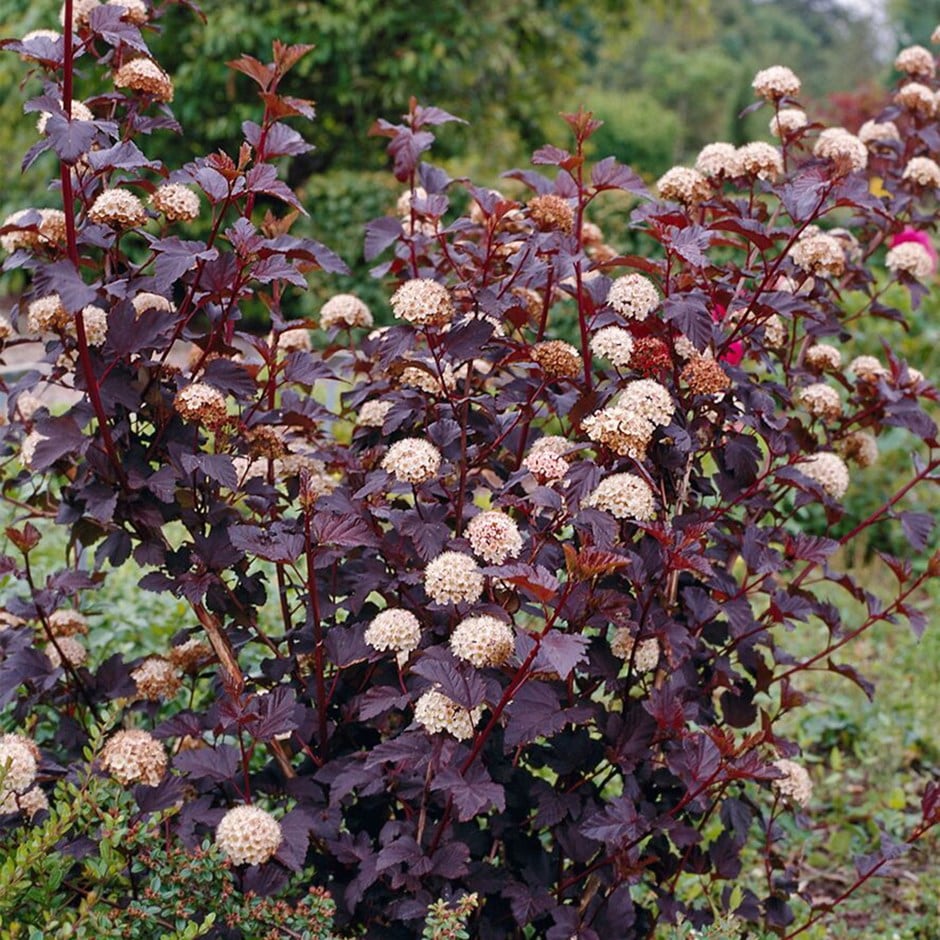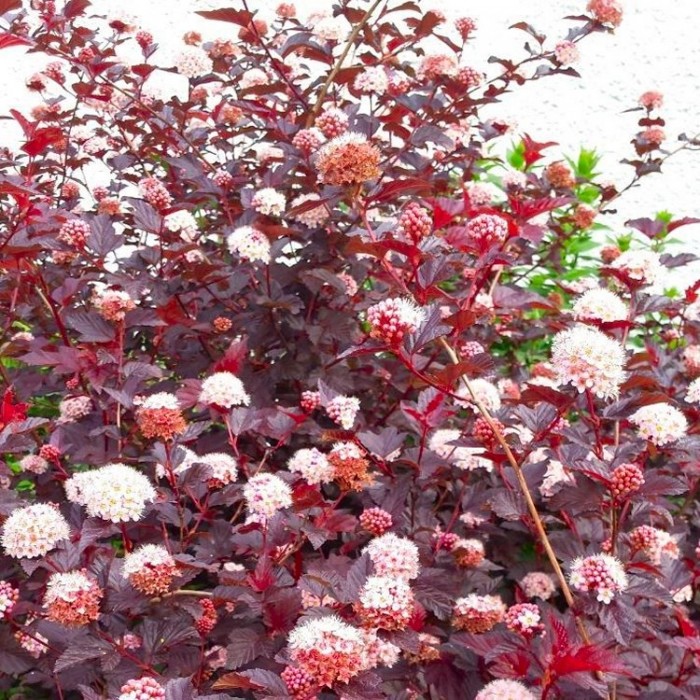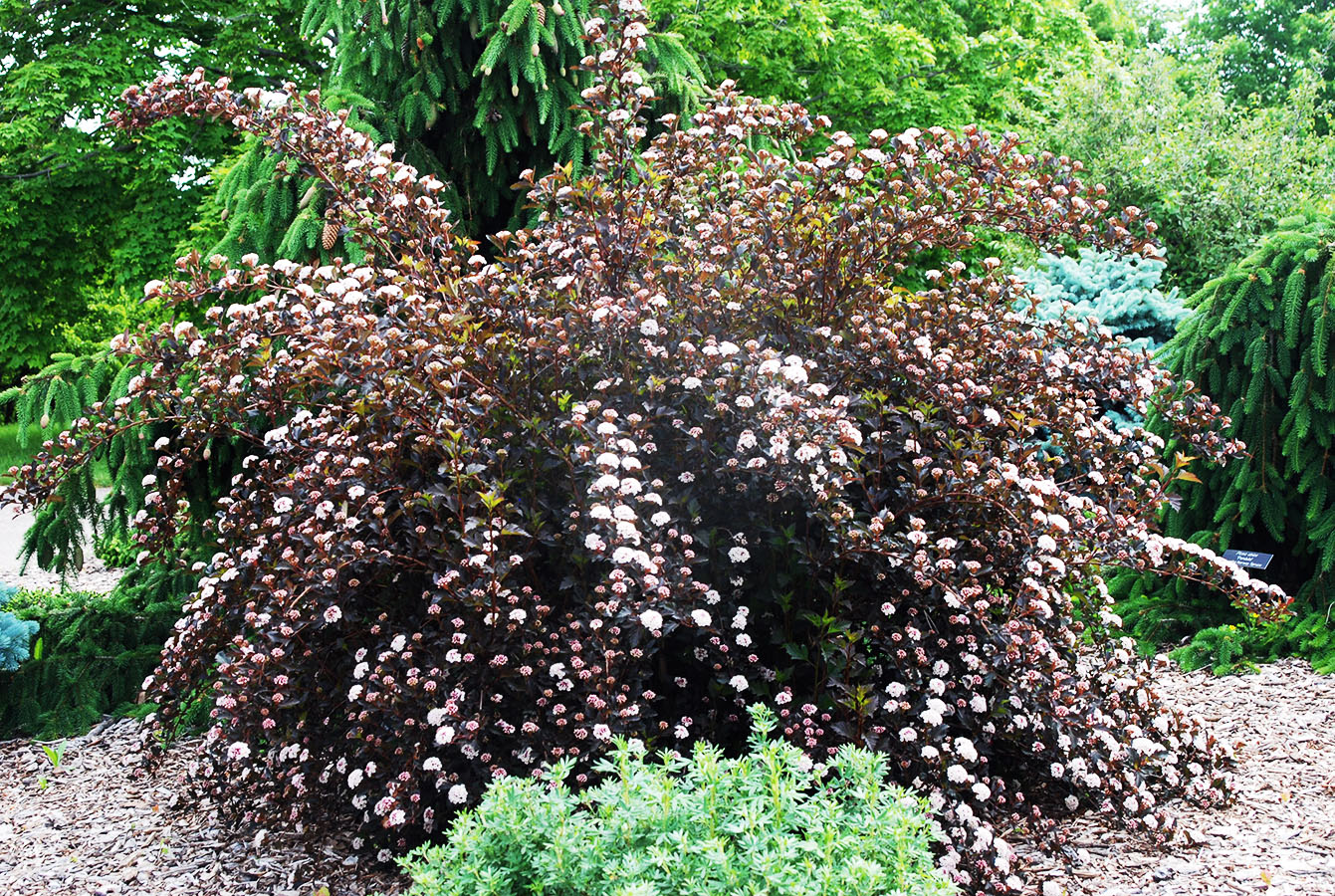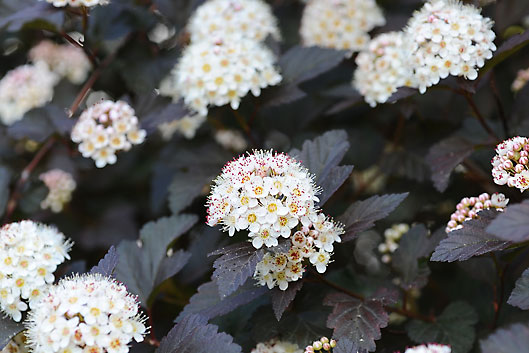Physocarpus: The Versatile Shrub That Will
Physocarpus: The Versatile Shrub That Will
Physocarpus, also known as ninebark, is a North American native shrub that is known for its versatility and hardiness. It can be grown in a variety of conditions, from full sun to partial shade, and in a wide range of soils. Physocarpus is also relatively drought-tolerant once established.
One of the most attractive features of physocarpus is its foliage. The leaves can be green, purple, or variegated, and they often have a deeply lobed or toothed appearance. In the fall, the leaves often turn shades of red, orange, or yellow.
Physocarpus also produces clusters of small white or pink flowers in late spring or early summer. The flowers are not particularly showy, but they do attract pollinators such as bees and butterflies.
After the flowers fade, physocarpus produces small, red fruits that are attractive to birds.
Physocarpus is a relatively low-maintenance shrub. It does not require regular pruning, but it may benefit from an occasional light trim to remove dead or damaged branches. Physocarpus is also relatively pest- and disease-resistant.
Here are some of the benefits of growing physocarpus:
- Versatile: Physocarpus can be grown in a variety of conditions, making it a good choice for many different gardens.
- Hardy: Physocarpus is a hardy shrub that can withstand cold winters and hot summers.
- Drought-tolerant: Once established, physocarpus is drought-tolerant and can thrive in dry conditions.
- Beautiful foliage: Physocarpus has attractive foliage that can add color and interest to any garden.
- Attracts pollinators: Physocarpus flowers attract pollinators such as bees and butterflies.
- Deer-resistant: Physocarpus is deer-resistant, making it a good choice for gardens where deer are a problem.
Here are some ideas for how to use physocarpus in your garden:
- Use physocarpus as a screen or hedge to provide privacy or to block unsightly views.
- Plant physocarpus in a mixed border to add color and interest.
- Use physocarpus as a specimen plant to add focal point to your garden.
- Plant physocarpus under trees or shrubs to provide dappled shade.
- Grow physocarpus in a container on a patio or balcony.
If you are looking for a versatile and hardy shrub that can add beauty and interest to your garden, physocarpus is a great option. With its attractive foliage, colorful flowers, and drought-tolerance, physocarpus is a shrub that will thrive in many different conditions.
Physocarpus, commonly known as ninebark, is a genus of flowering plants in the rose family Rosaceae. Native to North America and northeastern Asia, there are about 15 species of physocarpus.
Ninebark shrubs are known for their exfoliating bark, which peels away in layers to reveal a reddish or light brown inner bark. They also have attractive foliage, which can be green, yellow, or purple, depending on the species. In the spring, ninebark shrubs produce clusters of small, white or pink flowers.
Ninebark shrubs are relatively easy to care for and are drought-tolerant. They can be grown in full sun to partial shade and in a variety of soil types. However, they do best in well-drained soil.
If you are looking for a beautiful and low-maintenance shrub for your garden, ninebark is a great option. To learn more about physocarpus, visit Garden Wiki.
FAQ of physocarpus
Here are the 5 most frequently asked questions about physocarpus, along with valuable insights and solutions:
1. What is physocarpus?
Physocarpus is a genus of deciduous shrubs and small trees native to North America, Asia, and Europe. They are known for their showy flowers, which are typically white, pink, or red. Physocarpus shrubs are also known for their attractive foliage, which can be green, red, or variegated.
2. How do I grow physocarpus?
Physocarpus shrubs are relatively easy to grow. They prefer moist but well-drained soil and full sun or partial shade. They are tolerant of a wide range of soil pH levels, but they do not like chalky soils. Physocarpus shrubs should be pruned in early spring to remove any dead or damaged branches. They can also be pruned to shape or control their size.
3. What are some common problems with physocarpus?
The most common problems with physocarpus shrubs are powdery mildew, aphids, and spider mites. Powdery mildew can be treated with a fungicide. Aphids and spider mites can be controlled with insecticidal soap or neem oil.
4. How can I propagate physocarpus?
Physocarpus shrubs can be propagated by seed, division, or cuttings. Seed propagation is the least reliable method, but it can be successful if the seeds are fresh. Division is the most reliable method of propagation. To divide a physocarpus shrub, dig it up in early spring or fall and carefully separate the roots into two or more sections. Each section should have at least one healthy root and shoot. Cuttings can be taken from physocarpus shrubs in late spring or early summer. To take a cutting, make a clean cut just below a node. Remove the lower leaves from the cutting and plant it in a pot of well-draining potting mix. Keep the potting mix moist and the cutting in a warm, sunny location. The cutting should root in about 4-6 weeks.
5. What are some good companion plants for physocarpus?
Some good companion plants for physocarpus include peonies, hydrangeas, and roses. These plants all have similar growing requirements and will complement each other well in the garden.
Image of physocarpus
5 different images of "physocarpus" from Pinterest:
- Physocarpus opulifolius 'Diabolo' is a popular variety with dark purple leaves.

- Physocarpus opulifolius 'Lady in Red' has bright red leaves.

- Physocarpus opulifolius 'Summer Wine' has wine-red leaves.

- Physocarpus opulifolius 'Monlo' has white flowers.

- Physocarpus opulifolius 'Little Devil' is a dwarf variety with dark purple leaves.

Post a Comment for "Physocarpus: The Versatile Shrub That Will"